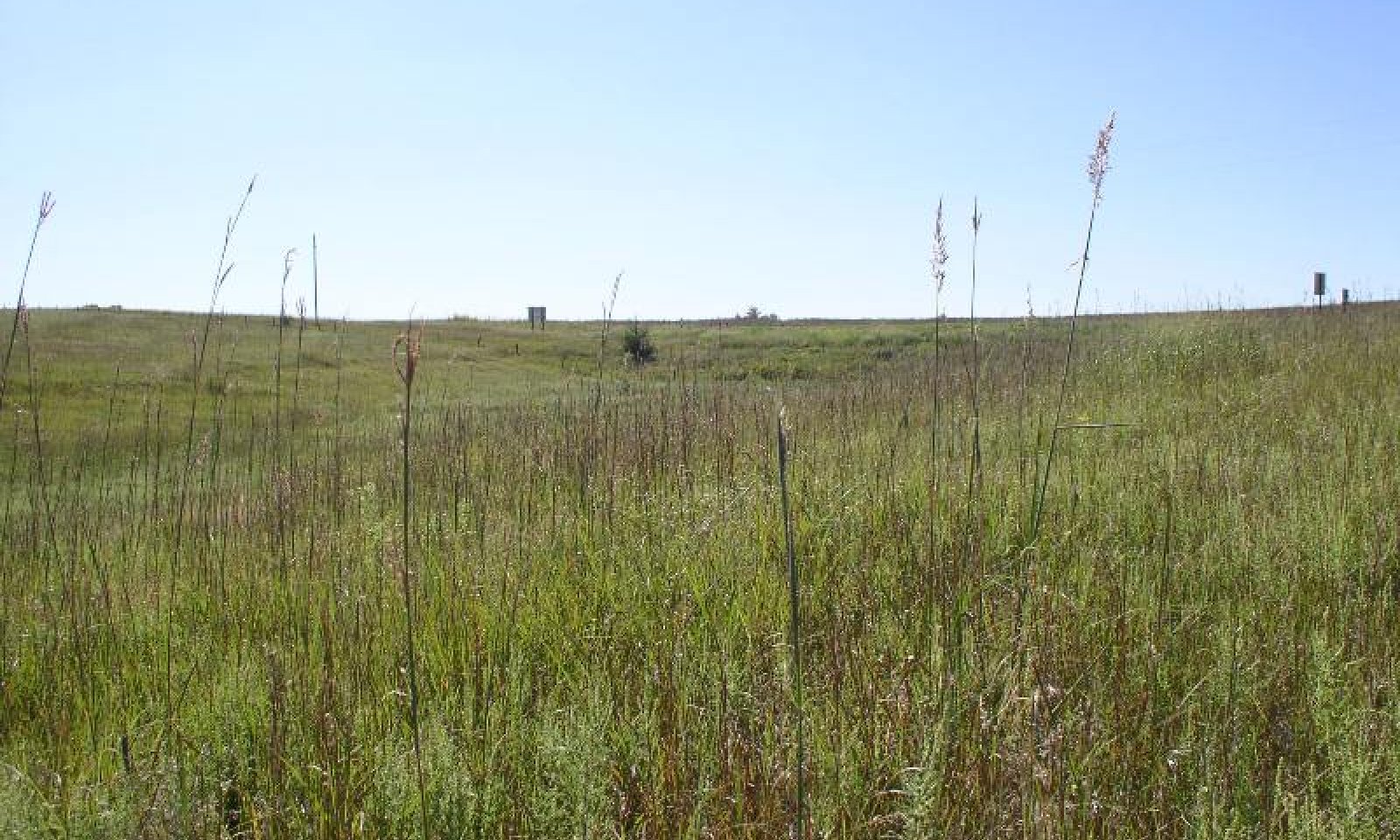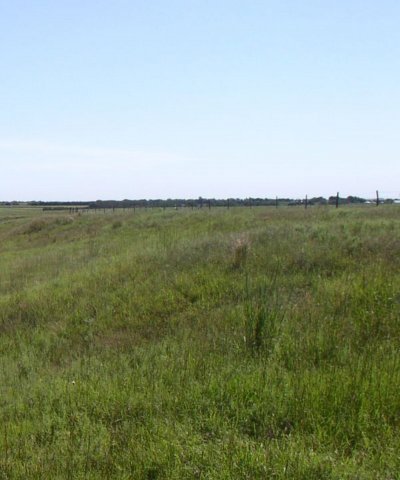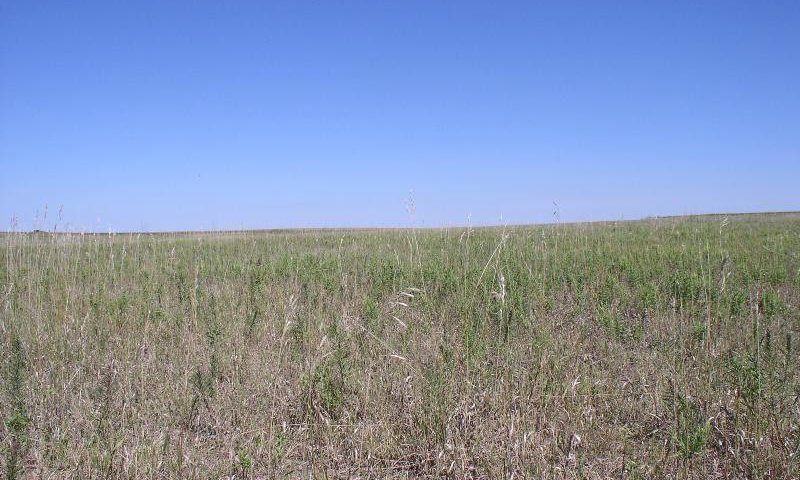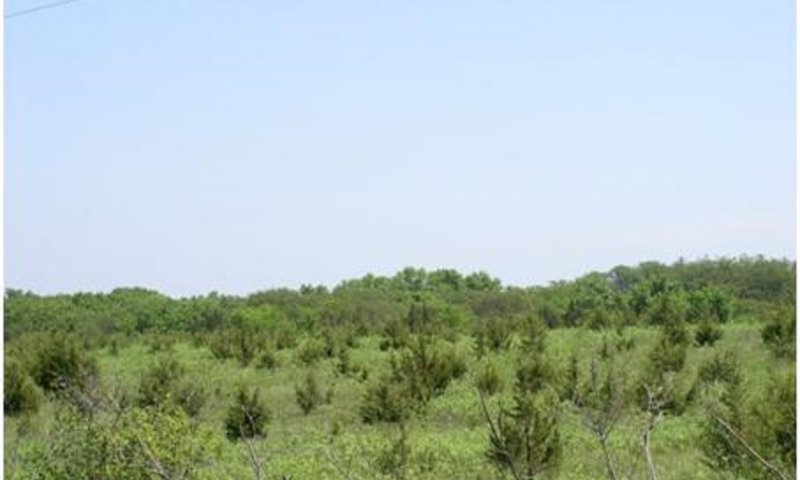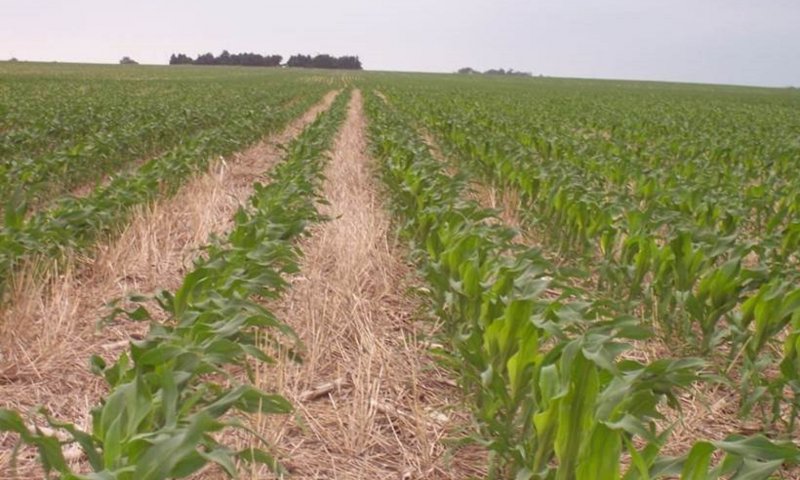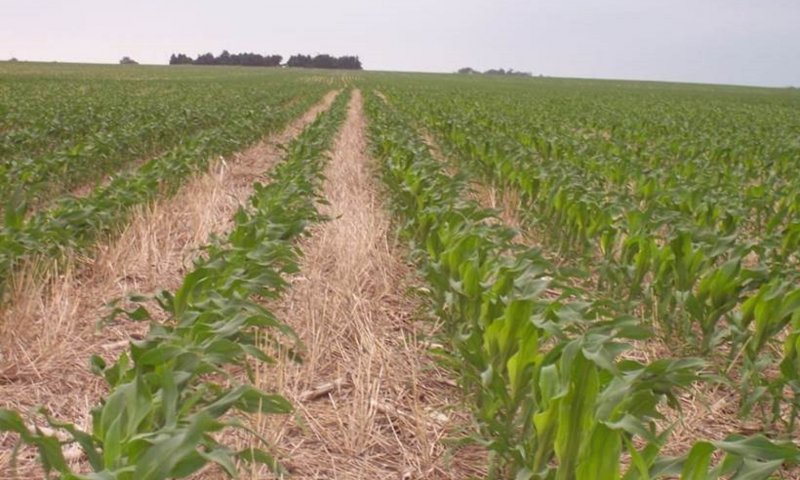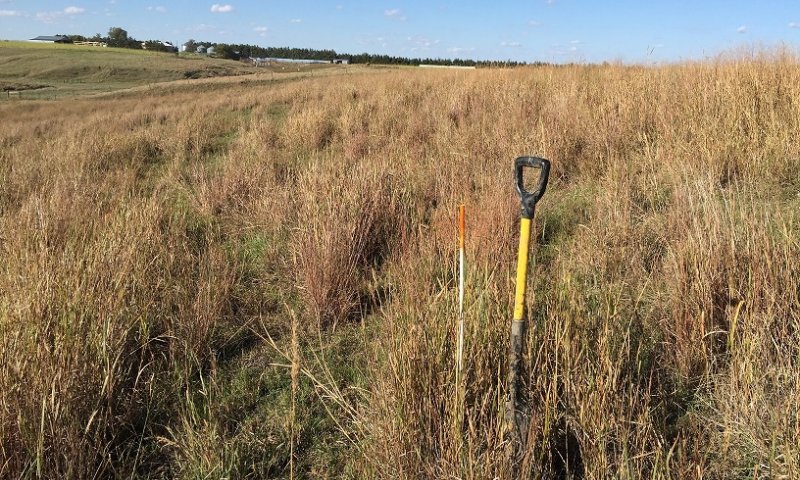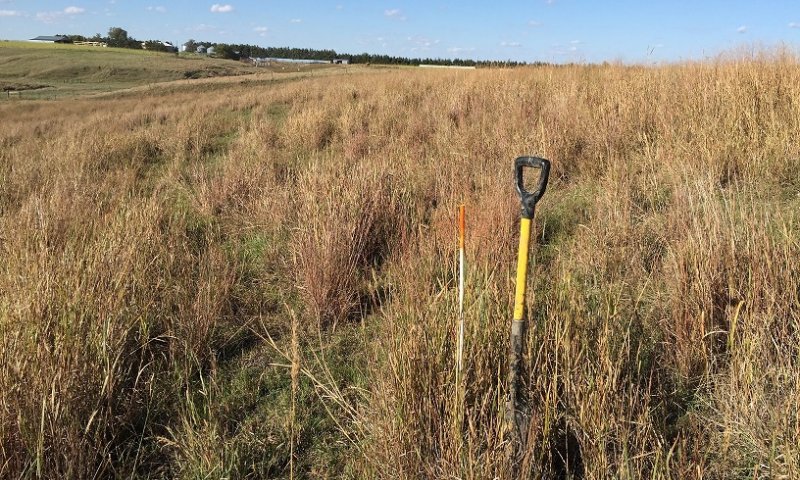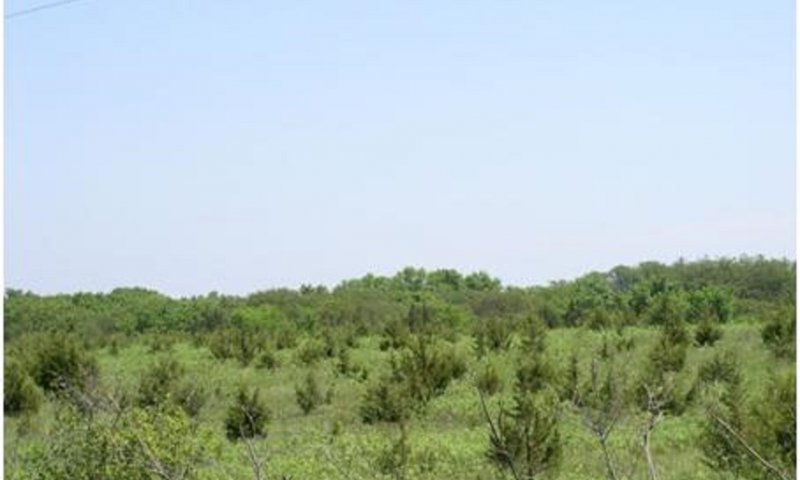State and transition model
State 1
Rangeland (Loess mixed grass prairie)
Management interpretations
Community 1.1
Loess Mixed Grass Prairie
Community 1.2
Native/Invaded Grass State
Community 1.3
Invaded Grass State
Community 1.4
Invaded Woody State
Pathway P
Community 1.1 to 1.2
Loess Mixed Grass Prairie
Native/Invaded Grass State
Pathway P
Community 1.1 to 1.3
Loess Mixed Grass Prairie
Pathway P
Community 1.1 to 1.4
Loess Mixed Grass Prairie
Pathway P
Community 1.2 to 1.1
Native/Invaded Grass State
Loess Mixed Grass Prairie
Pathway P
Community 1.2 to 1.3
Native/Invaded Grass State
Pathway P
Community 1.2 to 1.4
Native/Invaded Grass State
Pathway P
Community 1.3 to 1.1
Loess Mixed Grass Prairie
Pathway P
Community 1.3 to 1.2
Native/Invaded Grass State
Pathway P
Community 1.3 to 1.4
Pathway P
Community 1.4 to 1.2
Native/Invaded Grass State
State 2
Cropland (Irrigated and rain fed)
Management interpretations
|
> 0.5 SCI
|
Optimum cropland state
|
|
0.0 - 0.5 SCI
|
Average cropland state
|
|
< 0.0 SCI
|
Degraded
|
|
0.8 t/ac
|
corn, grain
|
|
0.0 t/ac
|
soybean, group II, III, and IV
|
Community 2.1
Optimum Cropland State
1. Sheet and rill erosion: 0-2 tons, no ephemeral gullies in drainage courses, optimum soil properties (high organic matter), granular soil structure, no sediment deposition on and off-site, Positive SCI 0.5 or higher (optimum biodiversity and soil structure)
Water: Minimal runoff, little moisture loss, excellent surface water quality (optimum water and nutrient cycles)
Plants: Well above average crop yields, IPM utilized, high fertilizer use efficiency. (optimum productivity)
Animals Adequate food, cover, and shelter for upland wildlife. (optimum WHI)
In field Indicators: high soil organic matter (dark color), well developed surface layer, no compaction, crusting and crumbly soil structure; no gullies, no evidence of erosion/runoff and no sediment deposition; excellent crop vigor
Resilience management. Optimum Cropland State:
Conservation Practices
329: Continuous No-till
328: Diverse crop rotation
C-SB-W/CC rotated from perennial hayland
330: Contour Farming
340: Cover Crops
528: Prescribed Grazing
386: Field Borders
600: Terraces
412: Grassed Waterway
620: Underground Outlets
590: Nutrient Management (soil testing, zone mgt liming, 4Rs)
595: Pest Mgt (Scouting, Thresholds, Herbicide Resistance Management)
Community 2.2
Average Cropland State
2. Sheet and rill erosion: 5 tons, Some ephemeral gullies in drainage courses/repair needed, average soil conditions (average organic matter), average soil structure, some sediment deposition on and off-site, SCI 0.0 +/- 0.5
Water: Moderate runoff, some soil moisture loss
Plants: Average crop yields, moderate level of IPM, average fertilizer use efficiency.
Animals Average food, cover, and shelter for upland wildlife.
In field Indicators: average soil organic matter (slightly dark color), average surface layer depth, moderate compaction layer, average soil structure; some evidence of sheet and rill erosion runoff and sediment deposition; average crop vigor
Community 2.3
Degraded
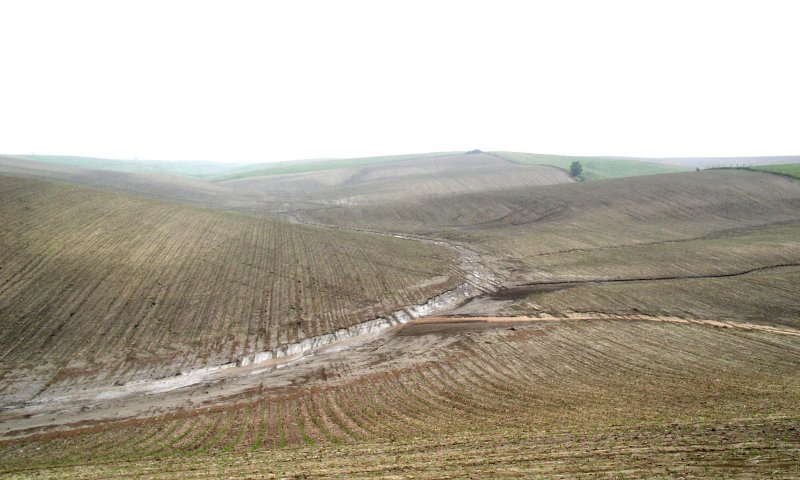
Figure . High Erosion

Figure 1. High Erosion
3. Sheet and rill erosion: 3-4 times tolerable level, ephemeral gullies in drainage courses, poor soil conditions (low organic matter), crusting, compaction layer, sediment deposition on and off-site, Negative SCI, low soil organic matter, poor soil tilth/aggregate stability
Water: Excess runoff, excessive moisture loss, surface water contamination of sediment and herbicides.
Plants: Low crop yields, excessive annual broadleaf and grass weeds, nutrients are not available as needed (low pH causes poor legume yield), high weed pressure.
Animals: Lack of food, cover, and shelter for upland wildlife.
Air: Excessive Particulate Matter (wind erosion)
In field Indicators: low soil organic matter (light color), surface layer eroded away, compaction, crusting and poor soil structure; gullies, evidence of erosion runoff and sediment deposition; poor crop vigor
Pathway T1A
Community 2.1 to 2.2
Tillage, residue removal, less crop diversity
Pathway T2A
Community 2.2 to 2.1
Long term SHMS (cover crop, cont NT, diverse rotations, livestock grazing), optimum soil moisture management and permanent gully erosion control measures
Pathway T2B
Community 2.2 to 2.3
Conventional tillage, excessive fertilization, less cropping diversity, no gully erosion control measures, residue removal, poor soil moisture mgt, long term drought, or excessive rainfall
Pathway T3A
Community 2.3 to 2.2
Reduce tillage, retain all crop residue, diversify rotation
State 3
Pastureland (Irrigated and rain fed)
Management interpretations
|
0
|
Jan
|
|
0
|
Feb
|
|
0
|
Mar
|
|
10
|
Apr
|
|
25
|
May
|
|
25
|
Jun
|
|
20
|
Jul
|
|
15
|
Aug
|
|
5
|
Sep
|
|
0
|
Oct
|
|
0
|
Nov
|
|
0
|
Dec
|
|
5,700-14,300
|
alfalfa
|
|
2,900-11,400
|
big bluestem
|
|
2,900-11,400
|
eastern gamagrass
|
|
3,700-10,000
|
smooth brome
|
|
2,900-10,000
|
switchgrass
|
|
3,400-9,100
|
tall fescue
|
|
8,600-20,000
|
alfalfa
|
|
7,100-17,100
|
big bluestem
|
|
7,100-23,000
|
eastern gamagrass
|
|
8,600-17,100
|
smooth brome
|
|
5,700-15,700
|
switchgrass
|
|
7,100-15,700
|
tall fescue
|
Community 3.1
Dryland Pasture (Loamy Plains)
Resource Concerns in Degraded State:
SOIL EROSION:Sheet and rill erosion, ephemeral erosion, concentrated flow erosion
SOIL QUALITY DEGRADATION: SOM degradation, Compaction
WATER QUALITY DEGRADATION: sediments, nutrients, pathogens
DEGRADED PLANT CONDTION: weed infestation, over grazed, reduced yield
LIVESTOCK: inadequate feed/forage, inadequate water supply
WILDLIFE HABITAT: cover
Adapted Cool-Season Grasses
Creeping meadow foxtail
Meadow brome
Smooth brome
Orchardgrass
Canada wildrye
Tall fescue
Western wheatgrass
Intermediate wheatgrass
Tall wheatgrass
Adapted Warm-Season Grasses
Big bluestem
Sideoats grama
Switchgrass
Little bluestem
Indiangrass
Adapted Legumes
Cicer milkvetch
Illinois ticktrefoil
Birdsfoot deervetch
Alfalfa
Red clover
Community 3.2
Irrigated Pasture (Loamy Plains)
Resource Concerns in Degraded State:
SOIL EROSION:Sheet and rill erosion, ephemeral erosion, concentrated flow erosion
SOIL QUALITY DEGRADATION: SOM degradation, Compaction
WATER QUALITY DEGRADATION: sediments, nutrients, pathogens
WATER QUANTITY: inefficient use of water
DEGRADED PLANT CONDTION: weed infestation, over grazed, reduced yield
LIVESTOCK: inadequate feed/forage, inadequate water supply
WILDLIFE HABITAT: cover
Grasses adapted to mix with alfalfa (from FSGs):
Meadow brome, smooth brome, orchardgrass, tall fescue, western wheatgrass, intermediate wheatgrass
Pathway P
Community 3.1 to 3.2
Dryland Pasture (Loamy Plains)
Irrigated Pasture (Loamy Plains)
Pathway P
Community 3.2 to 3.1
Irrigated Pasture (Loamy Plains)
Dryland Pasture (Loamy Plains)
Community 4.1
Optimum woody state
WHI high
Community 4.2
Average woody state
WHI med
Community 4.3
Degraded
WHI low
Resource Concerns in Degraded State:
DEGRADED PLANT CONDTION: low production value, invasive species infestation
WILDLIFE HABITAT: food & cover
Pathway P
Community 4.1 to 4.2
Pathway P
Community 4.2 to 4.1
Pathway P
Community 4.2 to 4.3
Pathway P
Community 4.3 to 4.2
Transition T1
State 1 to 2
Rangeland (Loess mixed grass prairie)
Cropland (Irrigated and rain fed)
Cultivation (Irrigation Well and Irrigation Application System if irrigated)
Transition T2
State 1 to 3
Rangeland (Loess mixed grass prairie)
Pastureland (Irrigated and rain fed)
Cultivation and reseeding, abandoned, or combination of fertilizer, seeding, heavy summer grazing
Transition T3
State 1 to 4
Rangeland (Loess mixed grass prairie)
Encroachment by red cedar and lack of fire or brush management; Tree planing and Forest stand management
Transition T6
State 2 to 3
Cropland (Irrigated and rain fed)
Pastureland (Irrigated and rain fed)
Pasture seeding
Transition T5
State 2 to 4
Cropland (Irrigated and rain fed)
Abandonment and tree encroachment; Tree planting and Forest stand management
Transition T9
State 3 to 2
Pastureland (Irrigated and rain fed)
Cropland (Irrigated and rain fed)
Cultivation, (Irrigation well and Irrigation application system if irrigated)
Transition T7
State 3 to 4
Pastureland (Irrigated and rain fed)
Encroachment by red cedar and lack of fire or brush management, Tree planting and Forest stand management
Transition T4
State 4 to 2
Cropland (Irrigated and rain fed)
Clearing and cultivation
Restoration pathway T8
State 4 to 3
Pastureland (Irrigated and rain fed)
Clearing and Pasture seeding
